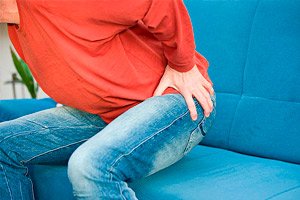
All iLive content is medically reviewed or fact checked to ensure as much factual accuracy as possible.
We have strict sourcing guidelines and only link to reputable media sites, academic research institutions and, whenever possible, medically peer reviewed studies. Note that the numbers in parentheses ([1], [2], etc.) are clickable links to these studies.
If you feel that any of our content is inaccurate, out-of-date, or otherwise questionable, please select it and press Ctrl + Enter.
Spinning has shown positive effects on hip osteoarthritis
Last reviewed: 03.08.2025
 ">
">A new study by Bournemouth University (BU) and University Hospitals Dorset (UHD) has found that spinning can help people with hip osteoarthritis. The study was funded by the National Institute for Health Research (NIHR) and published in the journal Lancet Rheumatology.
Participants in the study who attended weekly cycling classes and educational sessions reported better recovery outcomes compared to participants who received conventional physical therapy. The results suggest that better patient outcomes can be achieved with group cycling and educational sessions, while requiring less clinical time than standard individual physical therapy.
"In the time it takes to treat one patient with standard physiotherapy, we can treat several patients in a group session and give them better outcomes. This has proven to be cost-effective compared with standard treatment and we hope it will help reduce waiting times for physiotherapy on the NHS in the future," said Tom Wainwright, lead researcher and professor at Bournemouth University.
The CHAIN intervention used in this study was first launched in 2013 and provides weekly educational and static cycling sessions for 8 weeks to people with hip osteoarthritis (OA). OA is a leading cause of disability in older people. In the UK, 10 million people have osteoarthritis, of which 3.2 million have hip osteoarthritis.
Five-year follow-up showed significant improvement in hip function after treatment compared with usual physical therapy. Most participants continued to use self-management strategies to manage hip pain, and 57 percent did not undergo surgery.
Professor Rob Middleton, from BU and an orthopaedic surgeon at UHD, said: “A hip replacement costs the NHS over £6,000 per patient, so avoiding surgery reduces the burden on the NHS, saves money and improves outcomes for patients. Now with this new research we also see the potential for static cycling to deliver further savings to the NHS by reducing physiotherapy waiting lists.”
Dr Peter Wilson, chief medical officer at UHD, said: "As the population ages, we are increasingly seeing patients with osteoarthritis who require either surgery or physiotherapy. Finding alternative treatments will help reduce waiting times and the financial pressure on NHS services."
Professor Wainwright added: "We already knew that CHAIN worked and that it benefited patients. This latest study has shown that it improves clinical outcomes and is much more cost-effective than conventional physiotherapy."
Patients interested in the CHAIN program are referred to the UHD physical therapy team through their therapist. They are then enrolled in the eight-week program.
The researchers partnered with BH Live, a local registered charity and leading leisure centre operator, to deliver group sessions at BH Live Active, Littledown in Bournemouth.
Viv Galpin, BH Live's health and wellbeing manager, said: "Studio cycling is a great form of low-impact exercise. Among its other benefits, it helps to strengthen the muscles around your joints, maintain bone density, improve balance and reduce joint pain and stiffness. It's great to see so many members already benefiting from our programme."
One participant, Sue, was initially referred to a local hospital. She had been forced to give up two of her favourite activities – walking and dancing – due to painful hip problems. Speaking about her experience, she said: “My leg would give out and I suddenly couldn’t walk. In the first week of spinning, I could barely get on my bike. By the third week, I had already noticed positive changes in my hip. After the programme, I was walking again, dancing and grateful to be able to sleep well at night.”
To spread CHAIN across the country, the BU team has developed a virtual course on their educational app. People can follow the program from home or the gym using a static bike.
CHAIN's future aim is to roll out the programme across the country, providing other UK clinical teams with the knowledge and skills to deliver their own interventions.
Professor Wainwright concluded: “By providing an app that helps people manage their hip pain virtually, and supporting other professionals with the tools to run their own CHAIN programmes, we can change the way hip pain is treated nationally and internationally, helping our patients and improving the lives of thousands of people.”
